Top Tier CPU Air Coolers Q3 2015: 9-Way Roundup Review
by E. Fylladitakis on July 6, 2015 8:00 AM ESTThe Noctua NH-D15
Noctua is one of the world's most renowned cooler manufacturers. The company is especially well known for their high end and specialty products, aimed to those seeking extreme performance and or very low noise solutions. The cooler that the company provided us for this review is no other than the NH-D15, a behemoth based on the highly popular NH-D14.
The NH-D15 is supplied in a large cardboard box with a minimalistic, elegant design. Highlighting the main features of the cooler is the primary focus of the entire artwork. Inside the main box, we found the bundle packed into separate cardboard boxes and the cooler protected within a polyethylene foam construct. The bundle consists of the hardware necessary for the mounting of the cooler, an L type Philips PH2 screwdriver, a fan power cable splitter, two fan speed reducers, a tube of NT-H1 thermal grease, a metallic case badge, four rubber fan mounts and four wire clips for the two cooling fans.
Many people erroneously think that the NH-D15 is just a little larger version of the very popular NH-D14. The NH-D15 is a reverse-symmetric dual tower design based on the NH-D14, but there are numerous improvements. Noctua technically merged the core design of the NH-D14 with the fin design of the NH-U14S, which has the first seven fins of each tower shortened. This way, the NH-D15 can offer much wider compatibility with RAM modules if only the center fan is installed.
The rest of the fins are symmetric, meaning that both their sides are identical, which is mostly straight with a single small triangular notch at the center and a few more similar notches near the sides. In order to install/remove the NH-D15, the center fan needs to be removed. Another interesting point is that the fans can be moved upwards, several centimeters if needed be. Moving the front fan upward can allow the installation of tall RAM modules for a small impact on performance but it also requires a very wide case to do so.
Noctua provides two of their own NF-A15 140 mm fans alongside the NH-D15. Their brown/beige color is Noctua's trademark and unique to Noctua's products (or copies of them). These are very high quality fans, with SSO2 bearings (advanced liquid lubricated metallic bearings with magnetic stabilizers), rubber anti-vibration pads and ridged blades for airflow manipulation. For those that do not want to install the second fan on the cooler, because either they need to retain compatibility with certain RAM modules or they are simply satisfied with the performance of a single fan, Noctua provides rubber mounts for the installation of one NF-A15 as a case fan.
The base of the NH-D15 is relatively small in comparison to that of other coolers, yet obviously large enough to cover the entire surface of current CPUs. Most of the base is made out of copper, with steel parts used for retention, all nickel plated, along with the copper heatpipes as well. There are "only" six 6 mm heatpipes, the same number and size as with the older NH-D14, as Noctua clearly does not believe that enlarging the base and adding more heatpipes would make a notable performance difference. The contact surface is smooth and fairly well polished but not machined down to a perfect mirror finish.


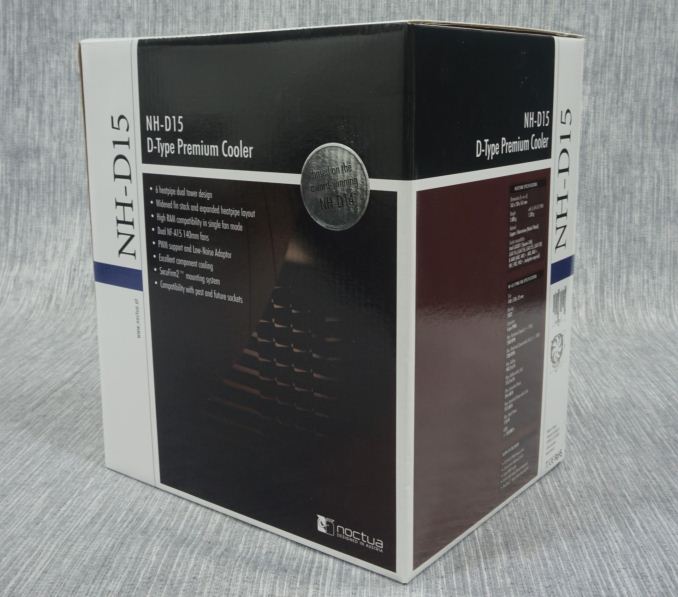
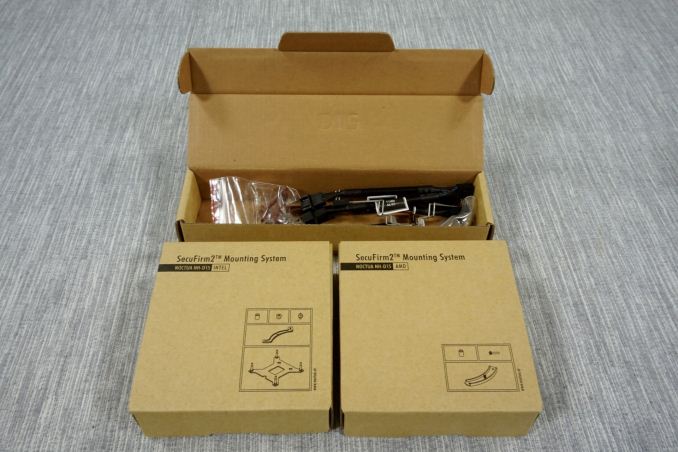
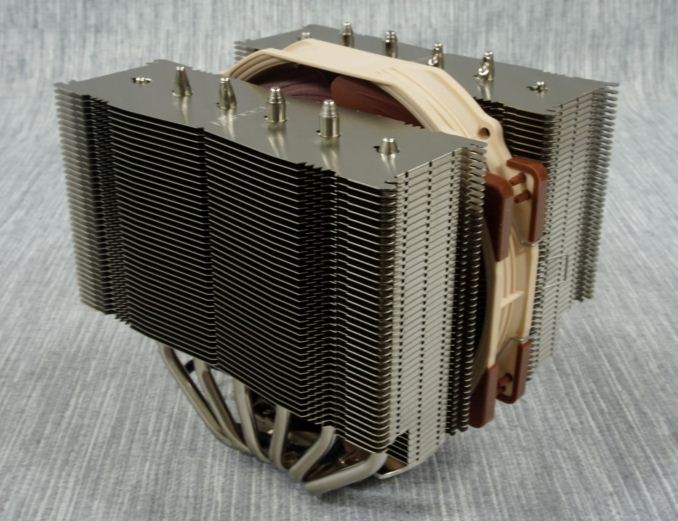
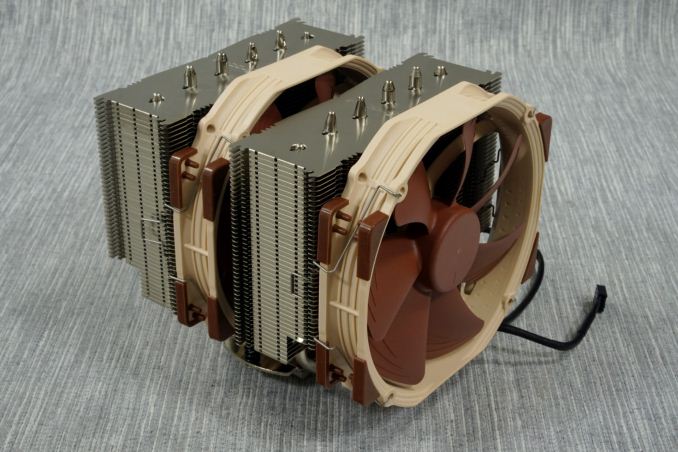
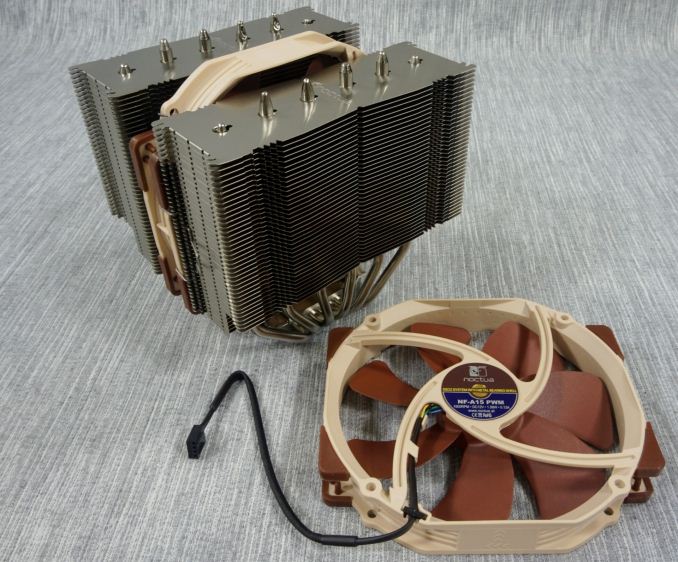
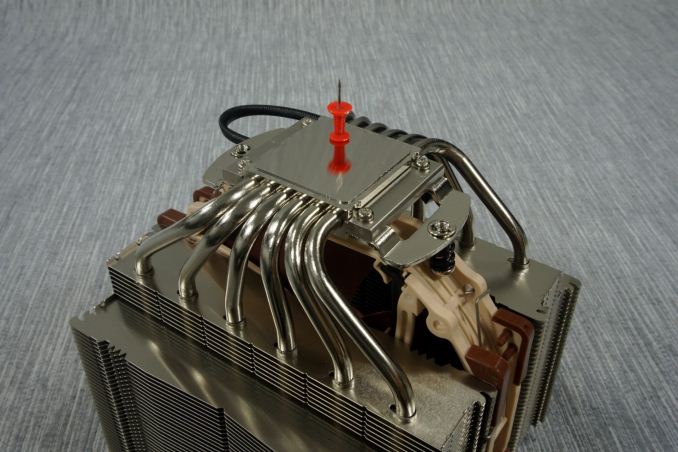








135 Comments
View All Comments
MartenKL - Monday, July 6, 2015 - link
I would of course like to see the testbed updated to have fan/s controlled by thermals, ie something like ASUS Fan Expert. Set for a target temperature and loads in the more realistic range of 15-150 watts. And of course when reducing voltage it should be via PWM and not simply reducing static voltage. The results should then be presented in temperature variance and noise levels/profile.MrSpadge - Monday, July 6, 2015 - link
Good suggestions. I hate those charts with "full fan voltage" and "fan voltage reduced to ..". What I really care about is "how silent can the cooler be for a given temperature / cooling performance?" And "which one cools better at similar noise level".It doesn't help much to see a strong fan with inbearable noise in those charts. Even if someone is interested in such solutions - wouldn't his question rather be "which heatsink performs best with this high-speed fan"? Which would again be something he couldn't answer from this data.
I know making noise based comparisons is difficult. But the raw sound pressure could be accompanied by some subjective remarks regarding the noise spectrum.
Cookiespy - Monday, July 6, 2015 - link
It would be interesting to see how the stock coolers compare to this high performance cooler. I wouldn't pay $80-100 just to see 5degrees improvement.Eidigean - Monday, July 6, 2015 - link
Chips big enough to need these coolers, such as Socket 2011, do not come with stock coolers.meacupla - Monday, July 6, 2015 - link
The stock heatsink cools great and is pretty silent with stock settings in a case with decent airflow, end of story.These kinds of $80 heatsinks are what you want when you overclock, but with the same or lower noise levels.
If you don't overclock, then a $20~25 heatsink can do a 5~20C improvement and keep the computer quieter at the same time too.
Eidigean - Monday, July 6, 2015 - link
What are you, a shill for Intel? The Intel stock heatsinks are the absolute worst. Check out the graphs from this Anandtech article:http://www.anandtech.com/show/6830/cpu-air-cooler-...
Dead last in performance AND noise. Stock heatsink was greater than 30 degrees C hotter, and 20 decibels louder.
meacupla - Monday, July 6, 2015 - link
It says right there in the system specs used to test those coolers..."Intel Core i7-2700K overclocked to 4.4GHz @ 1.4V"
I'm surprised the stock intel heatsink was able to complete the tests.
meacupla - Monday, July 6, 2015 - link
no wait, look, it says the stock heatsink and a low profile heatsink failed on an overclocked i7.Like I said, stock intel heatsink, especially the one with a copper core, works great at stock speeds.
Azurael - Friday, July 17, 2015 - link
I don't know if the stock HSFs have changed since Sandy Bridge, but my 2500k would hit 98+ degrees and throttle under AVX loads with the pathetic little stock thing whilst sounding like a small tornado had developed inside my case (how is it that a 95w CPU comes with an HSF half the size of the ones they used to ship with 65w C2Ds?!)Whichever cheap tower cooler I replaced it with does the job just fine, though. It's been running like a champ at 4.5GHz for near enough 4 years now. (I think it's a Xigmatek SD1283 - I haven't even taken the side off my machine for over a year, those heady days of tinkering and yearly upgrades long since passed.)
bug77 - Monday, July 6, 2015 - link
What, no mention of the weight of each cooler? I think that's a rather important aspect.